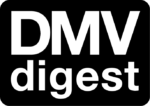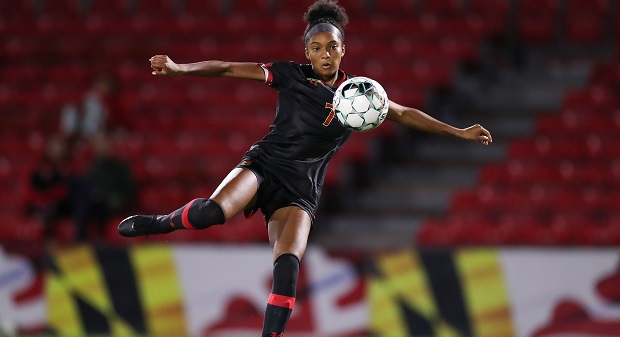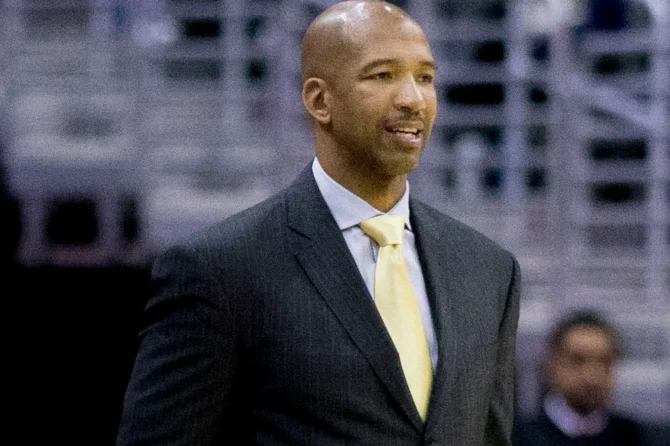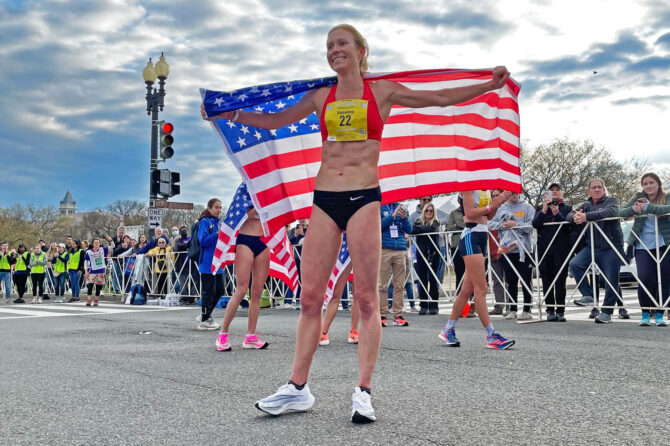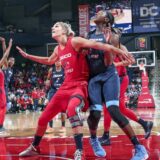Alyssa Poarch, entering her final soccer season at the University of Maryland, is busy planning for her future as a professional soccer player — and not just by brushing up on her conditioning and on-field skills.
Poarch, a forward who made the All-Big Ten second team as a sophomore, is also busy figuring out the personal brand that will earn her money and recognition.
The Delaware native already has struck deals with a couple of companies and is close to a deal with a third. Under it, Poarch would be a mentor to a girls’ soccer network and would earn half what the players pay to be in the network.
“I want to play professionally, and what I’m doing right now is kind of like trial and error, seeing what I want my brand to be,” Poarch said.
Poarch is taking advantage of groundbreaking rules adopted last year by the National Collegiate Athletic Association that allow student-athletes to profit from their own name, image and likeness, or NIL, a practice forbidden in the past.
She is one of hundreds of student-athletes across Maryland who aim to profit from the new rules, which took effect July 1.
Damon Evans, the University of Maryland’s athletic director and chief financial officer, has called the NIL rules a “seismic shift” in college athletics.
UM dominates the NIL sweepstakes among Maryland’s colleges and universities. Through March, student-athletes from 17 of the school’s 19 intercollegiate sports teams had disclosed 232 deals, although Jason Yellin, UM’s associate athletic director, said many more deals had not yet been disclosed.
The average compensation for a UM deal is $1,813, but some deals exceed $100,000, according to Yellin, who is also UM’s strategic communications officer.
The most common for-profit activity among Maryland’s student-athletes is posting on social media, at 36%, followed by signing autographs at events, at 18%.
The sport in which athletes have earned the most compensation, perhaps not surprisingly, is football; women’s basketball is second.
Not every money-making activity is allowed under the NIL rules. The athletes’ NIL activity cannot be directly based on their athletic performance or achievements – a student-athlete can’t be paid for scoring a game-winning touchdown — and must be valued fairly. Banned substances cannot be endorsed or sponsored. Students can’t make money while engaged in official team activities, and schools cannot broker deals for their students.
Still, the rules leave the door wide open for a plethora of money-making activities that were previously off-limits to student-athletes.
The NCAA had long argued against allowing students to profit from their athletic activities. But after several states passed NIL laws, and after the Supreme Court ruled last year that the NCAA’s prohibition on student-athletes’ making money violated antitrust laws, the NCAA relented. In June 2021, the association adopted a rules change that opened the door for NIL activity.
While many colleges and universities have embraced the rules change, they have approached the new opportunities in different ways.
The University of Maryland has partnered with Opendorse, a platform that helps college athletes develop their personal brands. Opendorse serves as a liaison, giving the school the materials it needs to educate athletes on what they can and cannot do for profit and on how to build a brand.
Among Maryland’s colleges and universities, UM’s Terrapins have far and away the greatest number of athletes taking advantage of the new NIL rules. But smaller schools have been active as well.
At Towson University, which competes in the Colonial Athletic Association, a mid-major conference, 30 to 40 athletes are participating in NIL activities, said Terry Porter, associate athletic director for compliance. Students from many sports are taking part, he added.
“Across the board, we have athletes in different sports with some sort of deal,” Porter said.
Towson University is also helping its student-athletes navigate the NIL guidelines, offering education sessions about the new rules and what they mean.
“We have education sessions about once a month on different topics and students are encouraged to attend,” said Maggie Yarnell, an athletic compliance specialist.
After decades of NCAA resistance to student-athletes’ making money from their name, image and likeness, many schools in Maryland and across the country are embracing the new rules.
“The point of all this is it creates opportunities for these athletes to make money in whichever way they want,” UM’s Yellin said. “They can be entrepreneurs.”
Photo: ‘I want to play professionally, and what I’m doing right now is kind of like trial and error, seeing what I want my brand to be,’ says Alyssa Poarch, a soccer player at the University of Maryland. (Submitted Photo to the Daily Record)
Read more articles like this at The Daily Record.
